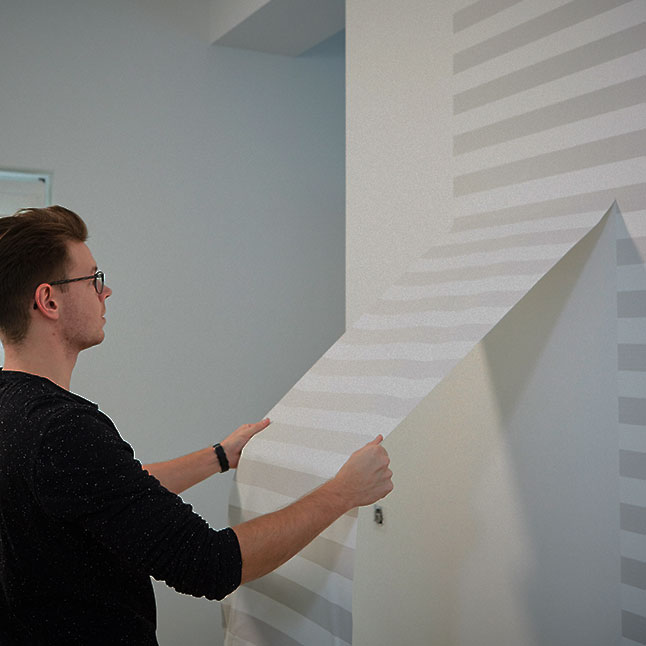Do old wallpapers have to be removed before wallpapering?
Always remove the old wallpaper before wallpapering. Gluing onto an existing wallpaper carries the risk of poor adhesion, seam behaviour or bubble formation or that the wallpaper below shows through.
Old wallpaper can be removed by hand with water, wallpaper solvent, a ceiling brush and a spatula. Stubborn old wallpaper that does not come off despite repeated wetting can be perforated with a hedgehog roller. Wash-resistant and scrub-resistant wallpapers can be removed better this way. If the wallpaper was applied with dispersion adhesive, often the only solution is to steam it off mechanically with a hot steam device.
Some wallpapers can be split. This means that the top layer can be removed dry and only a thin layer of paper, a so-called waste paper, remains. This serves as a base for the new wallpaper and may only be papered over if it adheres firmly to the substrate.
This can be checked by wetting the waste paper wallpaper with water in a few places and then waiting approx. 15 minutes. If no bubbles have formed by then, you can wallpaper on the existing waste paper.

